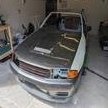I Think My Alternator Is Dead, Need Advice
Announcements
-
Similar Content
-
Latest Posts
-
Have you tried to start it with AFM unplugged? From memory with TPS closed and AFM unplugged an RB25 will start and idle (won't rev). This will tell you it's either AFM, AFM wiring, or tune. You also said Z32 ECU with Nistune? Have you made all the necessary changes like the change of the ABS input on the pin the Z32 uses for TPS closed? Was the Z32 specifically setup for RB25 S1 or S2 from R33? There are differences between that need mods done on Z32 ECU. What's the part number on your Z32 ECU?
-
You've been so patiently waiting for your moment! 🤣 Haven't got enough time on the freeway. I did drive it up from Canberra but I have no idea how it did in this area.
-
But not with the Wrist Twist!
-
By soviet_merlin · Posted
Out of curiosity, how do you cover up the inspection hole? Surely it doesn't sit open like that, right? With grime and dirt coming in and oil going out? -
Hi from Canada, Both of my calipers are starting to fail. My car is a 2005 M35 Stagea ARX and I can't seem to find any parts or any cross reference caliper that would fit my car. Is there a company or a similar caliper that would fit and I could replace the OEM one. Or if anyone knows where I can find a new OEM. Any help is very appreciated. Let me know!
-







Recommended Posts
Create an account or sign in to comment
You need to be a member in order to leave a comment
Create an account
Sign up for a new account in our community. It's easy!
Register a new accountSign in
Already have an account? Sign in here.
Sign In Now